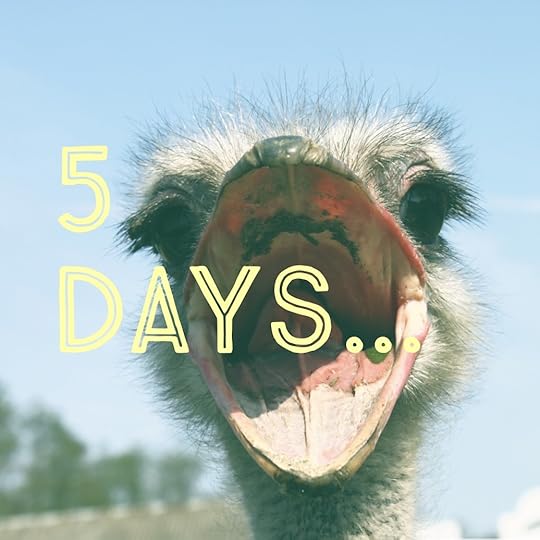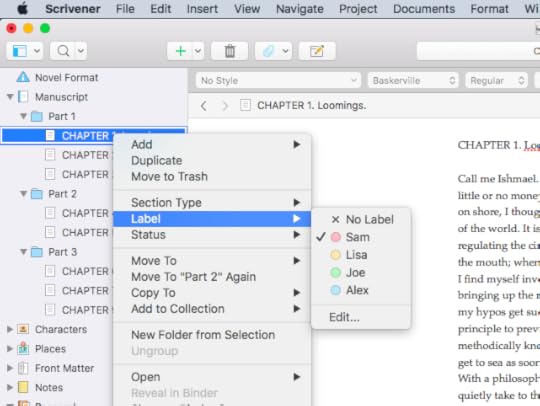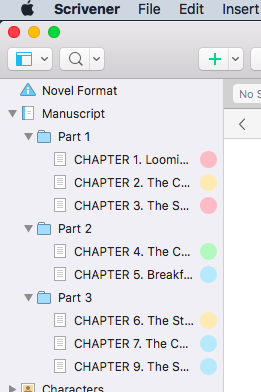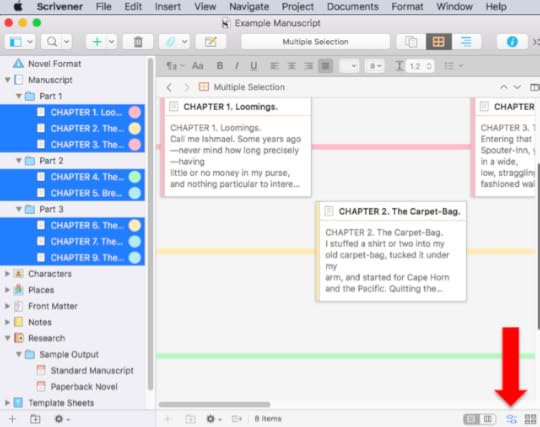April Davila's Blog, page 25
February 21, 2020
Barbary Coast Trail Markers

 This post is part of an extended series I’m writing about California.
This post is part of an extended series I’m writing about California. You can find out more on my Why California page.
In the 1850s sailors arriving in San Francisco quickly abandoned their ships to seek their fortunes in the foothills. Captains desperate for deck hands would troll the raucous red-light district for unsuspecting young men, drink them under the table, load their unconscious bodies onboard and set sail in the middle of the night with their new “crew.”
It was around this time that San Francisco was nicknamed the Barbary Coast, after the original Barbary Coast in Africa. At the time it was the only other place in the world where men were so regularly kidnapped onto ships.
These days the Barbary Coast is tourist central, complete with a self-guided walking tour, marked by 180 bronze medallions embedded in the sidewalks of the city. Following the 3.8 mile trail from 5th and Mission, along the city’s original waterfront, toward Fisherman’s Warf, gives a unique peek at San Francisco’s history, including the Old Mint (once known as the Fort Knox of the West) and the Hyde Street Pier, where Highway 101 ended before the Golden Gate Bridge was built.
Trail guides and audio tours can be found online and are well worth the nominal fee. Check out StoryTrails.co for some great insider travel info.
February 20, 2020
T-5 Days To Book Launch


My pub date is in 5 days! Final count down, people… this is it. And since I’ve been posting a lot about how “super busy” I’ve been lately, without giving any real concrete details, I thought I would take a few minutes and outline everything I’ve done in the lead up to my book launch, going all the way back to the beginning.
Online
The Blog: I started the blog back in grad school, a decade ago. It didn’t take off at first because it was more like a journal, but then I started blogging about the lessons I was learning as a writer (missteps along with triumphs) and it started to feel useful. That’s when more people started tuning in.
About five years ago I set up a MailChimp account and programmed it to pull posts directly from my site for a weekly blog post digest.
About six months ago I gave my website, blog, and newsletter template a design overhaul to match the marketing of the book. I got an official author photo and updated my profile image on EVERYTHING to that image .
Social Media: I ditched Facebook because they were charging me to boost posts that nobody ever saw anyway. Instead I focused on Twitter (where I share links to blog posts) and Instagram (where I share more personal photos). I engage on these two platforms daily and have, over the years, built up a pretty good following.
Research: Whenever I read a book I loved I would study the acknowledgements to find the name of their agent and then look them both up online (the author and the agent). I would follow them on Twitter, read their blogs, all of it.
In Person
I knew from the get-go that I wanted to go the traditional publishing route, so I started attending every panel, conference, reading I could (at first, with two small kids, it was hard, but it’s gotten easier as they’ve gotten older).
People would often offer help I wasn’t ready for (agents willing to read a query letter, book bloggers willing to do a review, etc.) I kept their cards and wrote on them to remind myself what they had offered so I could circle back to them. I’ve learned that it’s really nice to be able to say: “we met at the (fill in the blank) Writer’s Conference and you said I could contact you about (fill in the blank).”
These kinds of connections helped me to get support for the book launch in the form of blurbs, press, reviews, all of it.
I also made notes when I saw what other authors did well. For instance, if you’ve never been to an author event with Lisa See, you are missing out. She is so good in front of a crowd. She’s super engaged with readers (Skyping to join book groups) and shares all of her research online. She’s a great self-promoter, without being gimmicky. It’s something I really admire.
Volunteer
Volunteering is a great way to see behind the curtain of the places you want to be as an author.
Literary Journals: Before I ever submitted a short story, I worked on the staff of my grad program’s literary journal. I learned so much about what matters to the people on the receiving end of submission. Priceless.
Pasadena Literary Alliance: I volunteered my webs design and social media skills to help the PLA with a redesign a while back, and they invited me to be part of a new group they were forming called Open Book. They host author events and I got to sit in on the discussions about who they wanted to host and how they vetted those people even before approaching them (for instance – authors with videos online of themselves being interviewed always got more consideration because we could see how they were in front of a crowd).
LitWeekLA: My weekly newsletter about literary events in Los Angeles has allowed me to promote thousands of writers and support local bookstores. It has also taught me about good book titles, and cover art, and what kinds of events people are doing where. It has also given me a platform to promote my own readings now that the time has come. It’s a labor of love, for sure, but totally worth it.
After the Book Launch
All of these efforts took place over the last decade, as I worked on the novel, and it feels like it’s all finally coming together around the book launch to create some momentum around my writing career. The challenge now is to keep it all going.
Because it’s proving really challenging to keep carving out time to write, while doing all this other stuff. I’m really trying for an hour a day, but it only really happens about three times a week. Still, I guess 3 hours a week is better than none.
If you haven’t yet, you can order your copy of “142 Ostriches” online, or come on out to one of my author events and get a copy in person. Here’s hoping our paths cross in the next few weeks, before I nestle back into my writer’s hole and don’t come out for another few years.
February 17, 2020
Four Easy Ways to Make Scrivener Instantly Awesome

We’re continuing the #52WeeksOfScrivener series today with a little side step. I recently had lunch with a writer friend who had just downloaded the Scrivener app. I was so excited for her, because, well, I’m such a Scrivener nerd. I pulled my laptop out right there in the restaurant and showed her a few of my favorite little tricks, just enough to get her started without being overwhelming. And it seemed to me that other writers out there might benefit from a similar tutorial. So here we go:

Four Easy Ways to Make Scrivener Instantly Awesome
1. My number one favorite way in which Scrivener helps me with my writing is with the daily word count. Especially if you’re gearing up for NaNoWriMo this year, you have to check this out. It allows you to enter your writing days (for example: I write Monday through Saturday and take Sunday off), and then calculates how many words a day you have to write to hit your goal. If you miss a day it recalculates automatically. It’s AWESOME for keeping on track with writing goals.
2. Second is Scrivener Snapshots. This has changed the way I organize versions of my story in ways I didn’t even appreciated when I started. Used to be, every time I changed something significant in my story, I would save a new version and my files were cluttered with drafts and I could never find anything. Scrivener Snapshots made all that a thing of the past.
3. Similar to how I used to save drafts, I used to have files stuffed full of research, both on my computer and in my web browser, and I could never find anything. In Scrivener, you can drag and drop whole websites into your research files and never have to go looking for shit ever again. You can even access them when you’re offline. Awesome.
4. Then, once you have all that research, you can open it easily without losing your place in your writing by using Quick Reference Windows. Sometimes I’ll use this function to open an image so I can look at it as I’m describing it. Sometimes I use it to reference historical facts, or orient myself geographically in a city. You can also use it to open another chapter and view it beside the one you’re working on. So handy.
Using those four basic tools makes Scrivener instantly awesome, but there’s much more, when you’re ready… Stay tuned for more Scrivener tips every Monday. You can follow along on Twitter with #52WeeksOfScrivener, or sign up for my newsletter to get a weekly digest of all my posts.
February 14, 2020
The Martini

 (This post is part of an extended series I’m writing about California.
(This post is part of an extended series I’m writing about California. You can find out more on my Why California page.)
Didn’t know the Martini was a San Francisco thing, did ‘ya?
Well, legend has it that on a foggy night in 1862, a traveler stopped in at the Occidental Hotel on Montgomery Street in San Francisco. Behind the bar he found “Professor” Jerry Thomas, often considered the father of mixology, and the author of America’s first bartending guide.
When the visitor told the Professor that he was headed to the nearby town of Martinez, the bar keep improvised a drink that was two parts sweet Old Tom gin, and one part vermouth. In honor of the traveler’s destination he called it the Martini.
As tastes changed over the decades the drink became progressively drier. By the end of WWII the drink was 10:1, gin to vermouth. These days the International Bartenders Association declares the appropriate ratio 15:1.
Aficionados of the drink eschew the “dirty” martini with its splash of olive juice, and out rightly dismiss anything with vodka or cocktail onions (technically a Gibson).
In 2009 a small committee of bartenders in San Francisco declared the perfect Martini as 2.5 ounces Distillery No. 209 gin combined with .5 ounces Vya dry vermouth, stirred (not shaken) for 40 seconds, with six ice cubes, and then strained into a cocktail glass.
The Professor would be proud.
February 12, 2020
The Chaos of a Book Launch


I’ve decided what I will spend my money on, if I’m ever one of those authors who makes a gazillion dollars on book sales. An assistant.
Seriously, I can’t tell you how many emails I’ve started lately with the phrase “I’m sorry I’ve been so slow in responding…” I feel like there are a thousand little things to do, all of them important to my overall effort to promote this book launch.
Does the venue have a table for the book seller? When will I have that guest post ready? Can I arrive early for dinner before that one reading? Did I ever respond to that really nice woman who offered to help out with my reading? Have I posted notices of my readings to social media?
And the hardest part is that I REALLY CARE. I actually really care about all of these details. I am super excited to see some old friends. I absolutely want to facilitate the selling of books on site. I never want to ignore anyone who is offering to help. But I’m just fucking overwhelmed.
My to-do list grows more every day, even as I cross things off like a good little task monkey. The other night, I rolled over in bed to write a note to myself and found, in the morning, that I had written it OVER a different note I’d written myself the night before. It’s chaos, I tell you. (Thankfully, I wrote them holding the pad at different angels, so I can still read them if I look closely.)
What’s more, I insist on keeping my writing alive. I will not give up the hour or two a day that I’ve carved out to keep creating. I’m so close to finishing a draft of book two.
I seriously need an assistant.
Why am I sharing all of this? I’m not complaining. I’m excited to be at this point in the process and I guess I’ve always shared where I’m at in my ongoing journey as a writer. But in truth, it’s also to ask for some forgiveness, because I know some of you who read my blog are also some of the people waiting to get an email response from me about something.
I will get to you. I promise. I will cut corners where I can (hello prepackaged meals, goodbye long walks with the dogs), and I will get it all done…
Or I won’t.
February 10, 2020
Highlight Your Adverbs (and More) with Scrivener

If you’ve ever attended a writing conference or picked up a Writer’s Digest, you’ve heard how adverbs are the enemy of good writing. They weaken our verbs, and by association, our prose. But sometimes it can be hard to see our own writing objectively. Our eyes can skim right over things without seeing them.
So I’m loving this new feature in Scrivener 3.0. It’s called the Linguistic Focus.
Linguistic Focus in Scrivener 3.0
Select the text file in the binder that you want to focus on, go to edit -> writing tools -> linguistic focus.
When the option window pops up, click “adverb.”
As soon as you select the type of focus you want, everything else in the document will fade out and you’ll get something that looks like this:
As a fun side note, you don’t have to select adverbs. You can choose direct speech, nouns, verbs, prepositions and more.
It’s one of the many new functions that the folks at Scrivener added when they did their 3.0 software update.
Stay tuned for more posts on all things Scrivener.
February 7, 2020
Basket Weaving in Northern California

 (This basket was created by Sally Burris (1840-1912) from the Pomo tribe.)
(This basket was created by Sally Burris (1840-1912) from the Pomo tribe.)The art of basket weaving was perfected by the native people of Northern California over the course of 5,000 years, making it one of the oldest textile traditions in the world.
Most local basket makers utilized coiling or twining techniques that were simple enough in concept, but required years, if not decades of practice to perfect. Even the preliminary steps of material selection were based in know-how that was passed down through generations.
The tightly coiled baskets made of the locally abundant deergrass were excellent for food production. When soaked in water they swelled, making them waterproof, and they were durable enough to withstand the hot rocks that were used to cook acorn meal inside them.
In addition to cooking, baskets were used for serving, eating, harvesting, sifting acorn flour, storing food and water, even as hats and baby cradles.
The California State Parks Indian basket collection houses over 3,000 functional works of art that reflect the regional variations in Northern California basketry.
Though the tradition of basket weaving is an endangered art, there are still elders willing to teach their skills, and museums such as this one in Yosemite Valley often host demonstrations by native artists.
February 5, 2020
Diving Back Into 142 Ostriches


Part of planning my book tour is thinking about what sections I might want to read at signings and book parties. So this week I cracked a copy “142 Ostriches” and started reading with an audience in mind. A few things occurred to me.
It’s Been 2.5 Years
The first is that I finished this book in 2017. 2017 people. I’m thrilled to be traditionally published, but this is how long it has taken to find an agent, then a publisher, then do rounds of edits, then more rounds of edits. I mean, it’s been a long road.
And even though I have read it through, many times, emotionally I was done with this book in 2017. I’ve spent the last two and a half years writing my next book (which is almost done – woo hoo!) and starting book three. These are the books I’m emotionally engaged with at this point in my life.
And I Still Love It
The second thing that occurred to me, as I was reading through pages, is that I still LOVE this story. I had been avoiding reading it again because I always have this fear, every time I read something I’ve written, that I’m going to hate it. But I don’t. I love it. Like a child I’ve sent out into the world, I’m really proud of it.
This is the attitude that I’ve been nurturing as I plan the book tour. This book may be in my past, but it’s only just beginning to stretch it’s legs and I need to remember that I love it and, if I do say so myself, it’s pretty good.
What To Share
The third thing I realized is that there are very few sections of 142 Ostriches that I can read straight through without having to stop and explain things. I have heard authors talk about this as a challenge when they do readings.
One woman I heard speak at a conference (I’m sorry I can’t remember who, but it was at the WOTS conference a few years back) gave the advice that, when you are reading your book aloud to people, you absolutely don’t have to stick to what’s on the page. She said:
Go ahead and change words you want to changeSkip whole paragraphs and even pagesMake lots of notes ON THE PAGE so you remember when to emphasize certain things and when to skip thingsWrite in the margins the things you need to tell people before you start – and most importantlyNO SPOILERS
So I’ve been highlighting and underlining my copy of 142 Ostriches with gusto. At some point I’m going to read the sections out loud and time them, then make a note at the beginning of the section as to how long it takes to read it. This particular copy will become a bible for all my public readings from the book.
And Onward
It will be interesting to see how the publishing of this book overlaps with the final stages of bringing my second novel into the world. In theory, this one will go faster. I have an agent and a publisher. And I sincerely hope that I get better as a writer every time I sit down to write, so maybe I will need to do fewer rounds of edits this time… maybe?
As for the blog, I want to apologize to my long-time readers if my shift in subject matter has left them wanting. For nine years I blogged about the process and craft of writing, offering tips and insights as I figured them out along the way. Lately it’s been all about this publishing journey.
I do plan to come back to more craft-focused posts. It’s just that right now, publishing is what’s front of mind. I hope it’s useful. If there’s anything specific you’d like me to share, please let me know if the comments below.
And thanks for being a part of this journey. I really do appreciate having you here.
February 3, 2020
Using the Scrivener Timeline

We’re continuing the #52WeeksOfScrivener series today by taking a look at the Timeline view.

The Scrivener Timeline feature is so intuitive, it’s hard to believe that it wasn’t one of the first things developed back in version 1.0, but it didn’t become a thing until version 3.0. It was worth the wait. Here’s how it works.
Label Your Chapters
The first step is to label your chapters/sections/folders (whatever unit of your story you want to work with, really, but for this example I chose chapters). Do this by right clicking the name of the chapter (not the icon), and choosing the option for “label.” It should look something like this:

Now, you can use the colors provided there, or you can click edit and make those colors represent anything you want. Maybe you have four POVs in your story. Maybe you jump around in time. Maybe you have alternate universes in your story, or you move from planet to planet. Who knows. It’s your story.
Point is, you can change the labels. For this example, I’m going with POV. Here’s what it looks like once I’ve edited the labels to represent the four POVs of my story:


It’s important to note that you won’t see any sign of those pretty colored labels in the binder unless you go to VIEW > USE LABEL COLOR IN > BINDER. Then it’ll look like this (see image on the left there).
And this is kind of neat and all, but where it really gets useful is when you click to go to corkboard view. To do that, you can either click the little icon at the top (just right of the header bar) that looks like a waffle…
OR you can cherry pick the items you want to work with (COMMAND-click on my mac), then click the icon at the bottom right of your screen to display those items in the corkboard.

Now, if I zoom out a bit, you can see how this looks with all of my chapters lined up by whose POV they’re told from:

Looking at it like that I can see that my story starts out with more of Sam’s POV, then kind of shifts to more of Alex’s POV. Maybe I intended that, maybe not.
A Few Cool Things to Know
You can change the size and spacing of the cards which really helps a writer see all their cards in whatever space they happen to have. I like my little laptop screen, but I know some writers work on big ‘ol screens, and this feature works for both. To do that, click the little icon that looks like 4 note cards in a square formation, them adjust as you like:

If you move a card around (say from one timeline to another, or to a spot earlier or later in the story) it will move accordingly in your binder. Even the color will change automatically.
You can add research to your timeline. Say you’re writing a historical novel and you want to lay out the actual historical timeline next to your story, simple create documents in your research folder for each event you want on the timeline, and label them something like “historical.”
Next Week
Next Monday I’ll show you a super easy way to highlight the adverbs in your writing. Seriously. It’s so easy. You’ll love it. Stay tuned, follow on Twitter with #52WeeksOfScrivener, or sign up for my newsletter to get a weekly digest of all my posts.
January 31, 2020
Redwood Tress

 This post is part of an extended series I’m writing about California.
This post is part of an extended series I’m writing about California. You can find out more on my Why California page.
Until one stands at the base of a redwood tree, craning to look up into the canopy at its distant top branches, it’s difficult to appreciate their immense size. Taller than the statue of liberty and wide enough to park a Greyhound bus inside with room to spare, their stature is humbling.
The taller coastal redwood, sequoia sempervivens, is found in foggy seaside regions stretching up to the Oregon border. Their capacity for reaching heights of 350 feet or more is directly related to the ability of their pine needles to pull moisture from the air, thereby lessening the burden on their roots to deliver water to the canopies. The shorter, but generally more massive, giant sequoia, sequoiadendron giganteum, grows further inland in the Sierra Nevada Mountains.
Both species can live an estimated 4000 years thanks to their pest resistant wood, and a fire retardant chemical that allows large portions of a tree to burn while keeping its vascular system intact.
Given the name Americus in 1854, the trees were later reclassified by a German botanist in honor of a Native American man called Sequoyah who developed the Cherokee written language, but ironically never laid eyes on a redwood.





